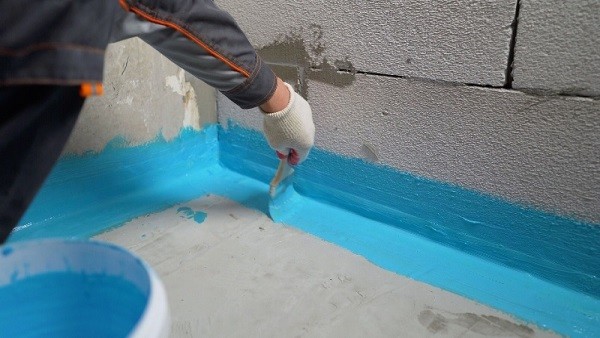Avoiding Moisture Problems: Basement Waterproofing Tips for Homeowners

Basement moisture is a common concern for many homeowners, leading to a host of issues ranging from structural damage to health hazards like mold and mildew growth. Waterproofing your basement is a proactive approach to prevent these problems, ensuring your home remains dry, safe, and comfortable.
This guide provides essential tips and strategies for homeowners looking to protect their basements from moisture invasion, offering practical solutions for both prevention and remediation.
1. Assessing Your Basement for Moisture Issues
Identifying the signs of moisture in your basement is the first crucial step in waterproofing it. Look for telltale indicators such as water stains on walls and floors, peeling paint, efflorescence (a white, powdery substance on walls), and a musty odor. Regular inspection during and after heavy rainfalls can also reveal water entry points.
Additionally, checking the exterior for foundation cracks or improper grading that directs water toward your home is essential. If you discover signs of moisture, determining its source is critical to choosing the right waterproofing method. For accurate diagnosis, consider consulting with a professional waterproofing contractor.
2. The Basics of Interior Waterproofing
Interior waterproofing strategies focus on preventing moisture from making its way into your basement. This may involve the application of sealants on basement walls and floors, which can block minor water infiltrations.
Another common method is the installation of a sump pump system to remove water that collects in the basement, particularly useful in areas prone to flooding or where the water table is high. Additionally, interior weeping tile systems can be installed beneath the basement floor to channel water away from the foundation.
3. Exterior Waterproofing Strategies
Exterior waterproofing is crucial for preventing water from entering your basement by addressing issues at their source. This comprehensive approach often involves the excavation of the soil around your home’s foundation to apply a waterproof coating or membrane to the exterior walls.
This barrier, combined with proper drainage systems such as French drains, helps redirect water away from your foundation. Beyond waterproofing, many homeowners also choose to remodel their basements to maximize the use of this often neglected space.
Basement remodeling can add valuable living space and increase the overall value of your home. However, it’s important to keep moisture in mind during the remodeling process.
4. Crucial Sump Pump Maintenance Tips
Maintaining your sump pump is essential in keeping your basement dry and protecting your home from water damage. Regular inspections, at least annually, ensure it operates correctly, especially before the rainy season. Check for debris in the pit, test the pump by pouring water into the pit, and listen for unusual noises that indicate repair needs.
Verify that the discharge line is clear and directing water away from your home. Installing a battery backup can provide extra protection during power outages. Remember, a well-maintained sump pump is a key component of an effective basement waterproofing strategy.
5. Sealing Cracks and Gaps Effectively
Sealing cracks and gaps is a fundamental aspect of preventing water from infiltrating your basement. Even small fissures can allow moisture to enter, leading to major problems over time. Use a high-quality, waterproof sealant for any visible cracks on the interior and exterior of your basement walls and floors.
For larger gaps, especially around pipe entry points, consider using hydraulic cement, which expands as it dries, creating a tight seal. Regularly inspecting and sealing these vulnerabilities can dramatically reduce the risk of moisture problems, helping to keep your basement dry and extending the life of your waterproofing measures.
6. Improving Drainage Around Your Home
Improving drainage around your home is a pivotal step in preventing water from gathering near your foundation, which can lead to basement moisture issues. Begin by ensuring that the landscape slopes away from your house, promoting water to drain outward rather than towards it. Additionally, extend downspouts to direct rainwater further from your foundation.
Consider installing rain gardens or using absorbent soil mixes that facilitate better water infiltration away from your home. Regular checks and maintenance of your drainage systems can prevent blockages that lead to water accumulation. These practices, combined with other waterproofing strategies, fortify your home against moisture intrusion.
7. Utilizing Dehumidifiers for Added Protection
Incorporating dehumidifiers in your basement waterproofing strategy adds an extra layer of protection against moisture. These devices help maintain an optimal humidity level, preventing the conditions that foster mold and mildew growth. For best results, select a dehumidifier based on the size of your basement and its typical moisture levels.
Consider models that feature automatic drainage to avoid the hassle of manually emptying the water collection tank. Regular use of a dehumidifier, especially during the humid months, can significantly contribute to keeping your basement dry and healthy, enhancing the overall effectiveness of your waterproofing efforts.
8. Regular Monitoring and Quick Response to Signs of Moisture
Consistent vigilance is key to sustaining the effectiveness of your basement waterproofing efforts. Monitoring your basement regularly for any signs of moisture or leakage allows for early detection of potential problems.
Quick response to such findings, whether it means clearing a blocked drainage system or reapplying sealant, can prevent minor issues from escalating into serious water damage. Establishing a routine inspection schedule can help in maintaining a dry and healthy basement environment.
9. Consulting with Waterproofing Professionals
While many waterproofing measures can be effectively implemented by homeowners, certain situations require the expertise of waterproofing professionals. Complex issues such as deep foundation cracks, substantial water infiltration, or the need for extensive external waterproofing may demand specialized knowledge and equipment.
Consulting with a reputable waterproofing contractor can provide tailored solutions that ensure the long-term protection of your basement against moisture.
In conclusion
Safeguarding your home from basement moisture is an essential task that requires a comprehensive and proactive approach. From assessing moisture issues and employing both interior and exterior waterproofing techniques to executing regular maintenance and improving drainage around your home, each step is crucial for preventing water damage and preserving the structural integrity of your residence. Incorporating dehumidifiers and staying vigilant with regular inspections also play pivotal roles in maintaining a dry, safe, and healthy basement environment.

